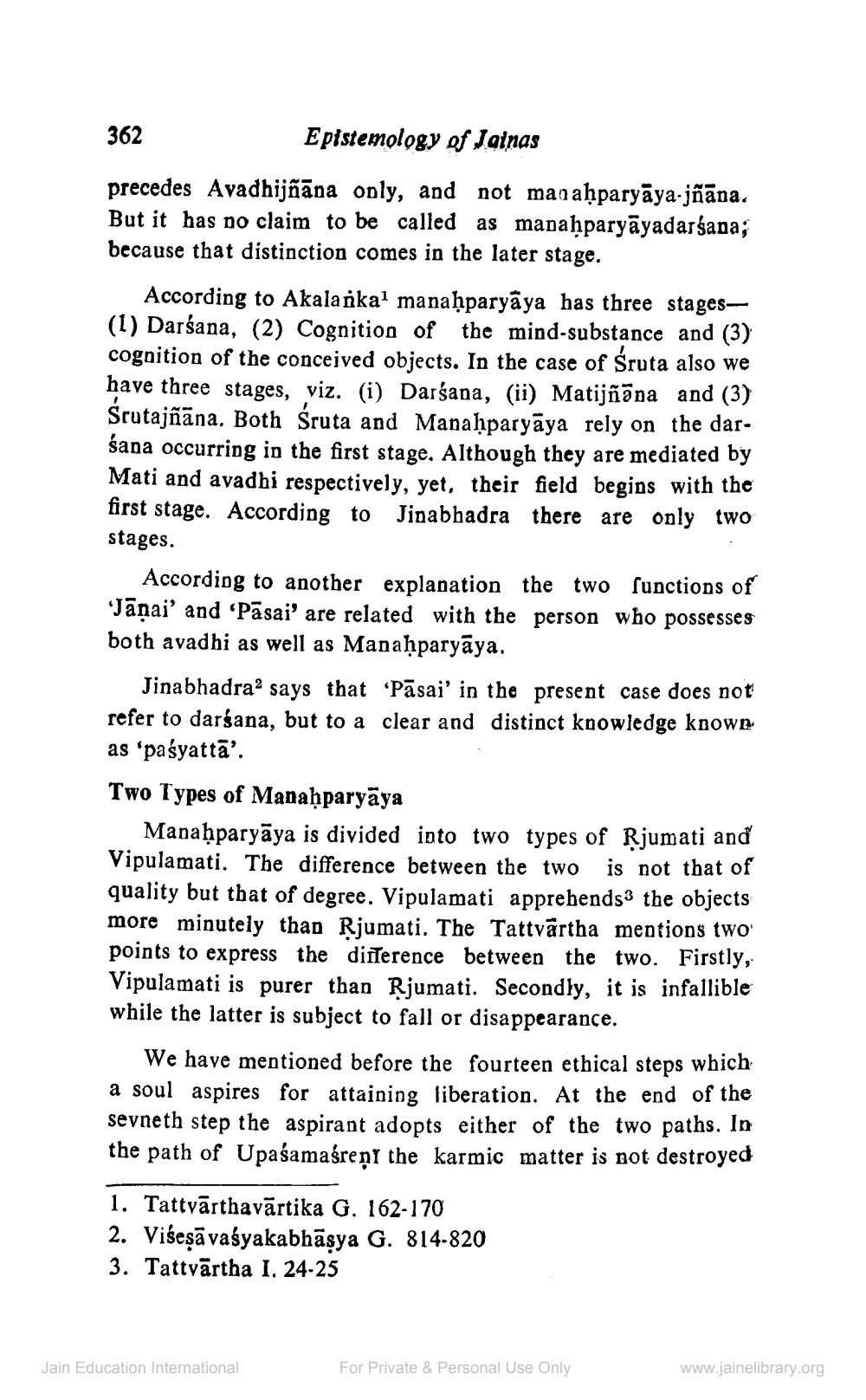________________
Epistemology of Jainas
precedes Avadhijñāna only, and not manaḥparyāya-jñāna. But it has no claim to be called as manaḥparyayadarśana; because that distinction comes in the later stage.
362
According to Akalanka1 manaḥparyaya has three stages(1) Darśana, (2) Cognition of the mind-substance and (3) cognition of the conceived objects. In the case of Śruta also we have three stages, viz. (i) Darśana, (ii) Matijñāna and (3) Śrutajñāna. Both Śruta and Manaḥparyaya rely on the darśana occurring in the first stage. Although they are mediated by Mati and avadhi respectively, yet, their field begins with the first stage. According to Jinabhadra there are only two stages.
According to another explanation the two functions of 'Jānai' and 'Pasai' are related with the person who possesses both avadhi as well as Manaḥparyaya.
Jinabhadra2 says that refer to darśana, but to a as 'paśyatta'.
'Pasai' in the present case does not clear and distinct knowledge known
Two Types of Manaḥparyaya
Manaḥparyaya is divided into two types of Rjumati and Vipulamati. The difference between the two is not that of quality but that of degree. Vipulamati apprehends3 the objects more minutely than Rjumati. The Tattvärtha mentions two points to express the difference between the two. Firstly, Vipulamati is purer than Rjumati. Secondly, it is infallible while the latter is subject to fall or disappearance.
We have mentioned before the fourteen ethical steps which a soul aspires for attaining liberation. At the end of the sevneth step the aspirant adopts either of the two paths. In the path of Upaśamaśrent the karmic matter is not destroyed
1. Tattvarthavārtika G. 162-170
2. Viseṣā vaśyakabhāṣya G. 814-820
3. Tattvärtha I. 24-25
Jain Education International
For Private & Personal Use Only
www.jainelibrary.org




